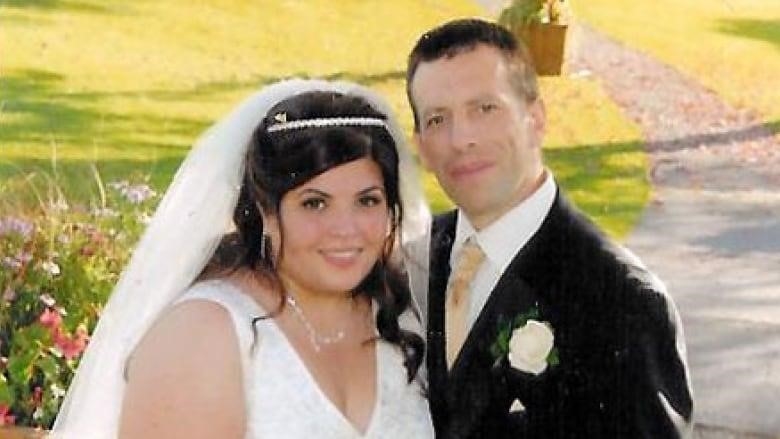
“When these numbers aren’t kept track of, it’s much easier to say that the problem isn’t that big.
Joanne MacIsaac remembers the day in 2013 when she found out that her brother Michael had been shot and killed by police.
MacIsaac said, “Something like that changes you.”
Michael MacIsaac was killed by a Durham police officer as he ran around his Ajax, Ont., neighborhood naked and holding a metal table leg. His family says this was a mental episode caused by his epilepsy.
According to data from the Tracking (In)Justice Project, MacIsaac was one of 24 people killed by police force that year. This information is now available online and dates back to the year 2000.
Since then, Joanne MacIsaac has pushed for changes to how police are trained in de-escalation and mental health, and she has asked police forces across the country to keep track of times when the use of force leads to a death.
She said, “When these numbers aren’t kept track of, it’s much easier to downplay how big the problem is.”
“When the government can tell you how many moose live on the island of Newfoundland but they can’t tell you how many people have died at the hands of police, I think that’s on purpose.”
704 killed since 200
Researchers from universities, community groups, and people who care about civil liberties led the project.
Since 2000, their numbers show that police use of force has killed 704 people in Canada. That’s an average of more than 30 deaths per year.
Since 2018, when 32 people died after a run-in with the police, the number has gone up every year. From 2019 (34 deaths) to 2022, the number doubled (69 deaths).
Alexander McClelland, a professor of criminology at Carleton University and the project leader, said that the work started because no government agency or other organization was keeping track of this information.
McClelland said it’s hard to figure out why those numbers are going up, especially since police are being watched more closely when it comes to violence.
“We can’t answer some simple questions like this one because law enforcement agencies aren’t always open and don’t always have the same data available,” he said.
“We hope that this data will start conversations, get people to look into why there may have been an increase, what that means, and bring more attention to the problem,” says the report’s author.
The BIPOC community has been hurt more than other groups
Tanya Sharpe, who started and runs the Center for Research and Innovation for Black Survivors of Homicide Victims (CRIB), wasn’t surprised by the data showing that black and indigenous people make up a disproportionate number of those killed by police force.
“Black and Indigenous communities face systemic injustice every day,” she said, adding that Indigenous and Black people make up 5.1 and 3.6% of Canada’s population, respectively, but 16.2% and 8.1% of police-involved deaths.
“That’s what we’re really trying to show with the Tracking (In)Justice website: the harsh reality for those communities that have been brutally, violently, victimized, and left out across Canada.”
Sharpe said that the fact that there is no official body keeping track of these deaths, which means that the communities most affected by violence have to do the research, makes them victims again.
She said, “The fact that communities that have been disproportionately affected by police use of force have tried to do grass-roots work by collecting that data shows at least that we have made some progress in asking, for example, the Toronto Police Service to collect data by race.”
“Before we sleep, we have a long way to go.” Still a long way to go.”
McLelland said that the lack of data makes it hard for the researchers to draw conclusions, even after all their work.
“There are a huge number of unknowns when it comes to race over race,” he said. “We’re telling the world about it to bring attention to the fact that we need answers to some of these questions.”
Why isn’t the data tracked
Since the internet gives us instant access to huge amounts of information, why isn’t it possible to keep track of the number of people killed by police?
McLelland said, “We might say that we have better access to information now, but we don’t.” “We want more openness so that everyone in their own community can answer these questions.”
MacIsaac is also shocked that Canada hasn’t done anything yet to improve the way it collects data.
“When you look at Ireland, England, and Australia, you can see that they know, but our government doesn’t.” “It says no,” MacIsaac said.
“I’d love for someone to argue or tell me why it’s not being kept track of. I’ve asked. No one can explain to me why.”
Scott Mills, who is in charge of strategic communications for the Ontario Provincial Police Association, said that police officers “never go to work looking for a fight or wanting to shoot someone or having to use any kind of lethal force.” It’s just not in their nature.”
He said that police are “highly trained” in ways to calm things down.
“It’s important to point out that a lot of these violent confrontations are caused by calls from the public.” The police didn’t ask to come here—they were called because things were already out of hand.
